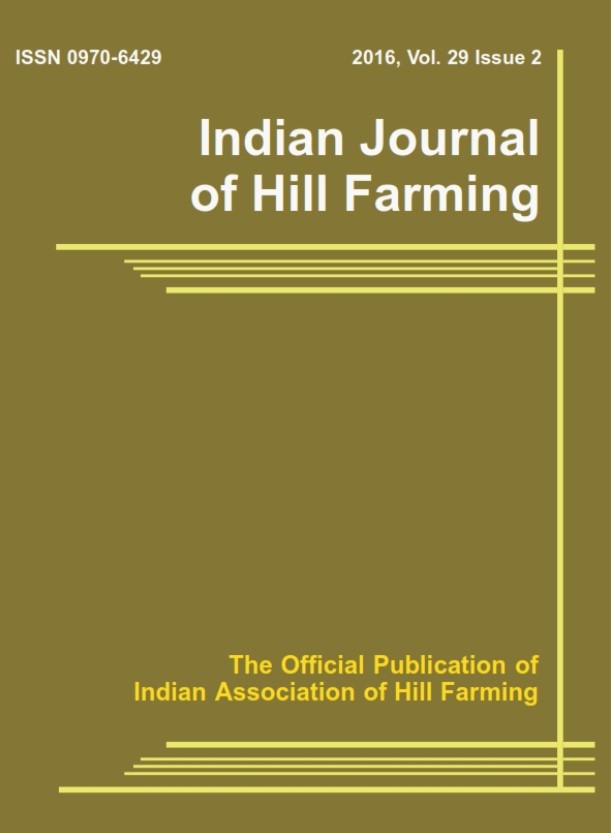Studies on biology at different temperature regimes and screening of indigenous stored rice cultivars against rice weevil, Sitophilus oryzae (L.) in Meghalaya
DOI:
https://doi.org/10.56678/Keywords:
Biology, Indigenous cultivars, Rice, Screening, Sitophilus oryzae (L.)Abstract
Rice is one of the most widely grown cereals with high global recognition and food value. In stored conditions, the most notorious pest of rice is Rice weevil (Sitophilus oryzae) causing approx. 10% harvest loss annually in India. Therefore, the present experiments were conducted on “Studies on Biology at Different Temperature Regimes and Screening of Indigenous Stored Rice Cultivars against Rice weevil, Sitophilus oryzae (L.) in Meghalaya” at the Entomology laboratory of School of Crop Protection, CPGS-AS, CAU (I), Umiam, Meghalaya from 2021-2023 to find the biology of Rice weevil, Sitophilus oryzae (L.) The experiment was laid out in the ambient condition of the laboratory following in a Completely Randomized Design (CRD), the treatments were replicated for three times and one way ANOVA was performed. The results of present study showed that the morphometrics of the eggs, larva and pupa were found to be smallest at 20±1°C and largest at 30±1°C. The mean incubation period of eggs of S. oryzae was shortest (4.5±0.5) days at 30±1°C and longest (6.93±0.4) days at 20±1°C. The mean hatching percentage of eggs of S. oryzae was maximum (75.83±2.9) per cent at 30±1°C and minimum (29.17±3.4) at 20±1°C. The longest duration of total larval period was recorded at 20±1°C (43.77±2.10 days) and shortest at 30±1°C (22.63±1.5 days). Pupal period occupied as 10.33±0.83 days highest at 20±1°C and lowest at 30±1°C as 5.60±0.36 days. The ovipositional period was found to be longest at 64.4±3.9 days at 20±1°C and shortest at 39.4±2.0 days at 30±1°C. It is concluded that the variety Jowain white showed higher percent weight loss at 30 days (9.5±0.2), 60 days (15.2±0.1) and 90 days (20.4±0.2). The variety Lakang baleigh shows least susceptible index 6.6±1.9. Growth index was found to be highest in the cultivar Mynri umiam (1.90±0.08). Per cent infestation was recorded to be highest in the variety Pnah sticky (25.5±9.5). The study suggests that prolonged storage of rice in lower temperature is beneficial and among the local varieties taken Lakang baleigh was found to be relatively resistant to the pest S. oryzae.Downloads
Published
2023-03-31
Issue
Section
Articles
License
Copyright (c) 2023 Abhipsa Subhadarsini, Mahesh Pathak, R.K. Patidar, Ansh Raj, Kennedy Ningthoujam, T. Rajesh (Author)

This work is licensed under a Creative Commons Attribution-NonCommercial-NoDerivatives 4.0 International License.
How to Cite
Studies on biology at different temperature regimes and screening of indigenous stored rice
cultivars against rice weevil, Sitophilus oryzae (L.) in Meghalaya. (2023). Indian Journal of Hill Farming, 36(02), 164-174. https://doi.org/10.56678/




